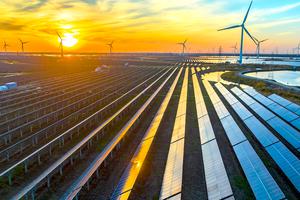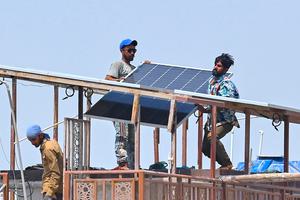Floating solar panels on an irrigation pond at the Far Niente Winery in Oakville, California. Far Niente Winery/UC Riverside
Across the U.S., the energy and agricultural industries are battling it out over whether to place solar panels or crops on large stretches of flat, sunny land. Now, a new study finds that developing solar energy arrays on alternative sites like buildings, lakes, and contaminated land would allow California to meet its 2025 electricity demands without sacrificing farmland.
The study’s authors, all from the University of California system, focused their analysis on California’s Central Valley. The Valley makes up 15 percent of California’s total land, and 3,250 of the Valley’s 20,000 square miles were classified as non-agricultural spaces viable for solar energy. But the authors calculate that development of solar power on just these lands would create enough electricity to power all of California 13 times over (with photovoltaic panels) or two times over (with concentrating solar power).
The Central Valley is a key agricultural region, supplying 8 percent of U.S. annual agricultural output, according to the U.S. Geological Survey (USGS). But the region’s immense energy demand and its year-round sunny skies also make it a prime location for solar energy development. The new study, published in the journal Environmental Science & Technology, finds a potential balance between agricultural concerns and the regional demand for solar energy.
“In the era of looming land scarcity, we need to look at underused spaces,” said Rebecca R. Hernandez, an assistant professor at UC Davis and co-author of the study. “This paper provides a menu for farmers, agricultural stakeholders, and energy developers to think about energy projects on spaces that don’t require us to lose prime agricultural and natural lands, which are becoming increasingly limited.”
The authors identified four types of non-agricultural spaces that could support solar development: the built environment, including buildings, rooftops, and parking lots; land with soil too salty for farming; reclaimed contaminated land; and reservoirs.
Dozens of brownfields, superfund sites, and other contaminated lands across the country have already seen renewable energy development through the EPA’s RE-Powering America’s Land initiative. Reservoirs could also be ideal sites for “floatovoltaic” development, as placid waters, proximity to energy demand, and potential for reduced evaporation create synergistic benefits.
—Hannah Hauptman



